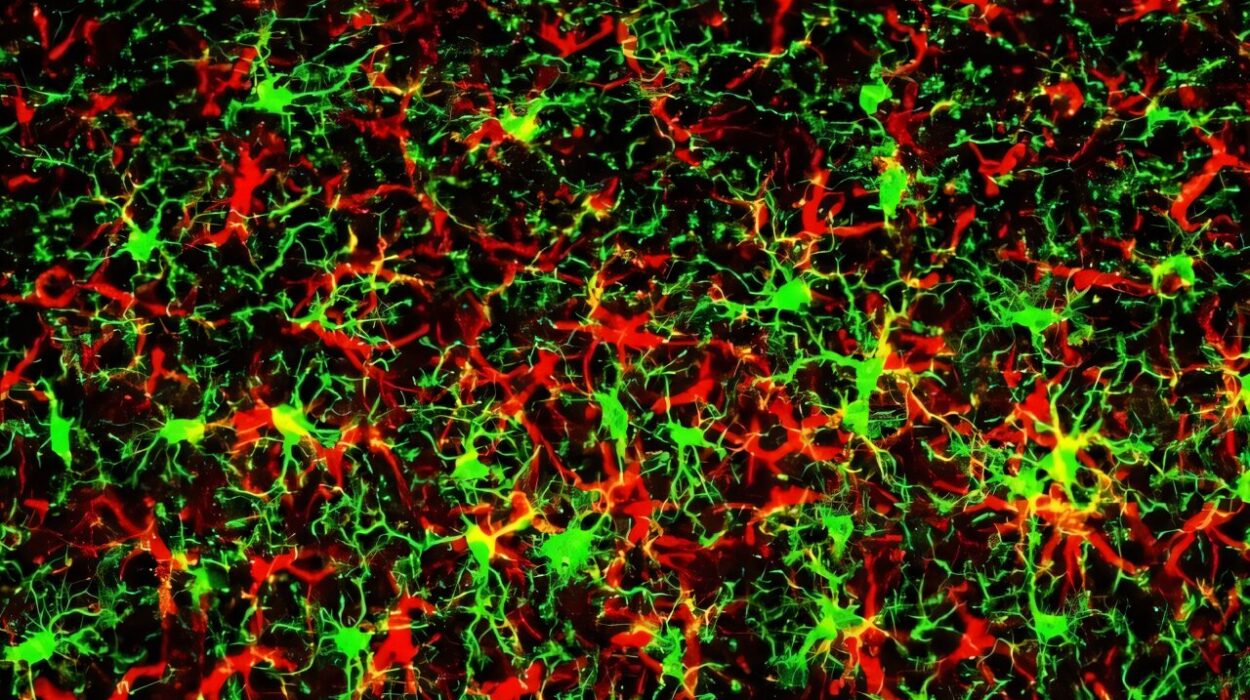In the vast symphony of the human brain, the prefrontal cortex is the conductor. It does not produce the music of thought on its own—neurons from across the brain contribute melodies of memory, rhythms of emotion, and harmonies of sensation—but it is the prefrontal cortex that orchestrates them into coherence. Without it, the music becomes noise. With it, we can plan, choose, direct our attention, and shape the future with the sheer force of will.
This region, nestled just behind the forehead, occupies the most evolved real estate in the human brain. While other animals possess versions of it, none approach the complexity of the human prefrontal cortex. Here lies the seat of higher-order cognition: decision-making, self-control, foresight, and the ability to keep our minds from scattering into distraction. In many ways, to understand the prefrontal cortex is to understand what makes us human.
Yet, this conductor of thought is not a tireless machine. It is fragile, easily fatigued, and influenced by emotion, environment, and biology. It thrives under certain conditions and falters under others. To explore it is to learn the art of focus—not merely as a skill, but as a biological dance between attention, emotion, and intention.
The Evolutionary Gamble
The prefrontal cortex is a latecomer in the story of evolution. Our earliest mammalian ancestors had small, primitive brains geared toward survival—find food, avoid predators, reproduce. With each evolutionary leap, the frontal lobes expanded, giving rise to increasingly complex behavior. In humans, the prefrontal cortex occupies a disproportionately large portion of the brain compared to other species.
This expansion came at a cost. Neural tissue is metabolically expensive, demanding enormous amounts of energy. Our brains consume about 20% of the body’s energy at rest, even though they make up only about 2% of our weight. The evolutionary gamble was that this costly expansion would be worth it. The payoff? The ability to imagine future events, hold multiple possibilities in mind, override impulses, and solve problems with abstract reasoning.
In evolutionary terms, these abilities allowed early humans to coordinate hunts, craft tools, develop language, and create culture. But they also opened the door to an entirely new type of mental vulnerability: distraction, anxiety, overthinking. The same brain that could plan the construction of a shelter could also lie awake at night imagining threats that did not exist.
Anatomy of Attention
When we speak of the prefrontal cortex and focus, we are really speaking about a network of regions, each with its own specialty. The dorsolateral prefrontal cortex is the workhorse of working memory, holding information temporarily so we can use it. This is the region that allows you to remember a phone number long enough to dial it, or keep track of the steps in a recipe.
The ventromedial prefrontal cortex helps integrate emotion into decision-making. It is not enough to know that one choice is logically better than another—we need to care about the outcome. This emotional weighting prevents us from making choices that are technically correct but humanly disastrous.
The orbitofrontal cortex serves as a kind of value assessor, constantly judging the potential rewards and risks of our actions. It updates its estimates based on new experiences, allowing us to learn from mistakes and avoid repeating them.
And then there is the anterior cingulate cortex, often considered part of the extended prefrontal network, which acts as a monitoring system, detecting when we are off track and signaling the need for adjustment. Together, these regions coordinate our ability to focus, plan, and execute complex behavior.
Focus as a Neural Balancing Act
Focus is not simply the absence of distraction—it is an active process requiring the precise coordination of brain regions. When you decide to read a book, your prefrontal cortex must inhibit competing impulses: the urge to check your phone, the temptation to daydream, the sudden itch to make tea.
This inhibition depends heavily on dopamine, the brain’s chemical messenger of motivation and reward. Dopamine does not simply make us feel pleasure; it sharpens our attention toward goals that promise reward. Too little dopamine, and motivation wanes; too much, and attention can become hyper-focused to the point of inflexibility, as seen in certain disorders.
The prefrontal cortex must also manage the default mode network (DMN), a set of brain regions that becomes active when the mind wanders. Daydreaming and mind-wandering are not inherently bad—in fact, they play a role in creativity—but when the DMN overwhelms the task-positive network, focus collapses. The prefrontal cortex is the moderator, deciding when to let the mind drift and when to bring it back to the task at hand.
The Fragility of the Conductor
For all its power, the prefrontal cortex is remarkably vulnerable. Fatigue, stress, and emotional turmoil can diminish its function almost instantly. Under chronic stress, the brain’s stress hormone cortisol can weaken prefrontal connections, impairing decision-making and impulse control.
This is why high-pressure situations often cause people to “choke” or make irrational choices. The amygdala, the brain’s emotional alarm system, can override the prefrontal cortex in moments of perceived threat. From an evolutionary perspective, this made sense—better to react quickly to danger than to ponder it—but in modern life, where threats are often psychological rather than physical, the amygdala’s overactivation can sabotage focus.
Even lack of sleep can dramatically impair the prefrontal cortex. Sleep deprivation reduces its ability to hold information in working memory, weakens inhibition of distractions, and makes emotional regulation more difficult. This is why attention feels slippery after a bad night’s sleep: the conductor is still there, but the baton has grown heavy.
Training the Mind’s Spotlight
The prefrontal cortex, like a muscle, responds to training. Practices such as mindfulness meditation have been shown to strengthen its ability to sustain attention and regulate emotion. Brain imaging studies reveal that regular meditation increases gray matter density in prefrontal regions, effectively fine-tuning the neural circuitry of focus.
Cognitive training—such as working memory exercises—can also improve prefrontal efficiency, though gains tend to be task-specific. Physical exercise, surprisingly, is another powerful enhancer of prefrontal function. Aerobic activity increases blood flow to the brain, boosts neurotrophic factors that support neuron growth, and helps regulate dopamine levels.
But perhaps the most important form of training is intentional attention. Each time we consciously choose to return to a task after distraction, we strengthen the prefrontal circuits responsible for focus. Over time, this practice becomes easier, and the “mental muscle” of attention grows more resilient.
The Prefrontal Cortex Across the Lifespan
The prefrontal cortex does not emerge fully formed at birth—it is one of the last brain regions to mature, reaching full development only in the mid-twenties. This explains why adolescents often struggle with impulse control and long-term planning: their conductors are still learning the score.
In adulthood, the prefrontal cortex operates at its peak, but even then it is subject to the wear of stress, illness, and aging. In later life, structural changes and reduced dopamine levels can impair focus and working memory. Yet, older adults often compensate with experience and refined strategies, demonstrating that while raw cognitive power may wane, wisdom can keep the orchestra playing in harmony.
When the Conductor Falters
Damage to the prefrontal cortex—whether from injury, stroke, or neurodegenerative disease—can profoundly disrupt focus and decision-making. Patients may become impulsive, unable to plan, or indifferent to consequences. In some cases, they retain intelligence but lose the ability to direct it effectively, a condition sometimes called “dysexecutive syndrome.”
Disorders such as ADHD, depression, and schizophrenia also involve altered prefrontal function. In ADHD, for example, differences in dopamine signaling and prefrontal connectivity can make sustained attention difficult. In depression, reduced activity in the dorsolateral prefrontal cortex is associated with difficulty concentrating and making decisions.
These conditions reveal the delicate interplay between brain chemistry, structure, and environment in shaping our ability to focus. They also underscore the importance of understanding the prefrontal cortex not just as an abstract concept, but as a living, biological reality that affects daily life.
Focus in the Modern Age
In the digital era, the demands on the prefrontal cortex have intensified. We are bombarded by notifications, ads, and information streams competing for our attention. Every click offers a dopamine reward, and the brain learns to seek novelty over sustained effort. This “attention economy” exploits the very circuits that evolved to help us focus on survival, turning them toward the consumption of endless, fragmented content.
The challenge today is not simply learning to focus, but learning to resist the pull of engineered distraction. This requires conscious effort: setting boundaries, creating environments conducive to deep work, and reclaiming mental space from the constant noise.
The Art and Science of Deep Focus
Deep focus is more than productivity—it is a state of neural alignment in which the prefrontal cortex, dopamine pathways, and sensory systems work in harmony toward a single goal. In this state, time seems to slow, distractions fade, and the mind feels fully alive. Psychologists call it “flow,” and it represents the peak expression of the prefrontal cortex’s capabilities.
Achieving this state requires balancing challenge and skill, minimizing interruptions, and working with, rather than against, the brain’s natural rhythms. It is not a permanent state—like a cresting wave, it rises and falls—but it leaves behind a residue of clarity and satisfaction that can transform the way we work and live.
The Prefrontal Cortex and the Future of Focus
As neuroscience advances, we may develop new ways to enhance prefrontal function—through neurofeedback, targeted brain stimulation, or pharmacological support. Yet, the essential truth remains: the power to focus is already within us, shaped by millions of years of evolution and refined through daily practice.
The prefrontal cortex is not merely a brain region—it is the architect of our intentions, the guardian of our goals, the keeper of our mental horizon. To understand it is to glimpse the machinery behind thought itself.
In a world that constantly pulls our attention in every direction, the greatest act of freedom may be to choose, again and again, where to place the mind’s spotlight. And in that choice, the prefrontal cortex is both our instrument and our guide—the conductor that, against all odds, keeps the music of thought in tune.






